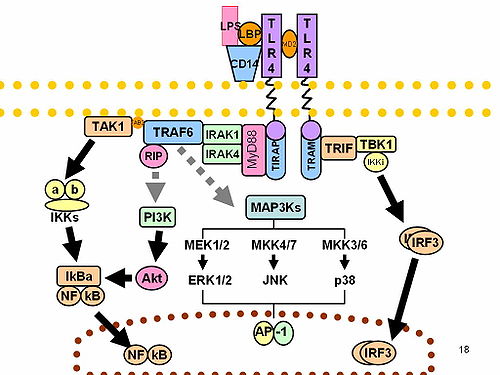TIRAP (TIR domain containing adaptor protein), also known as MAL (MyD88 adaptor-like protein) is an adapter protein associated with Toll-like receptors (TLRs), specifically TLR2 and TLR4. The innate immune system recognizes microbial pathogens through Toll-like receptors (TLRs), which identify pathogen-associated molecular patterns. Different TLRs recognize different pathogen-associated molecular patterns and all TLRs have a Toll-interleukin 1 receptor (TIR) domain, which is responsible for signal transduction. The protein encoded by this gene is a TIR adaptor protein involved in the TLR4 signaling pathway of the immune system. In TLR2 and TLR4, TIRAP is required for the MyD88-dependent pathway of immune signalling. In TLR2 and TLR4 signalling, TIRAP facilitates MyD88 recruitment which allows for downstream activation of NF-kappa-B, MAPK1, MAPK3 and JNK, which then results in cytokine secretion and the inflammatory response. Alternative splicing of this gene results in several transcript variants; however, not all variants have been fully described.




